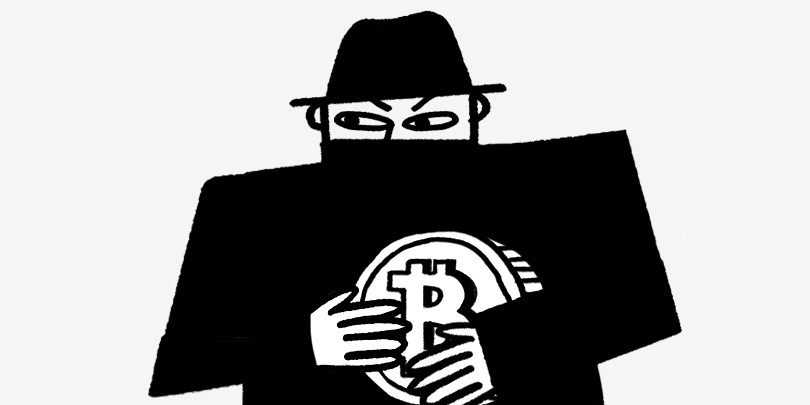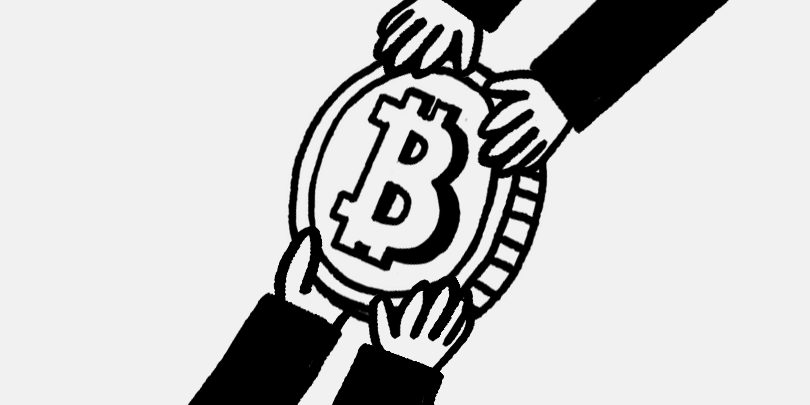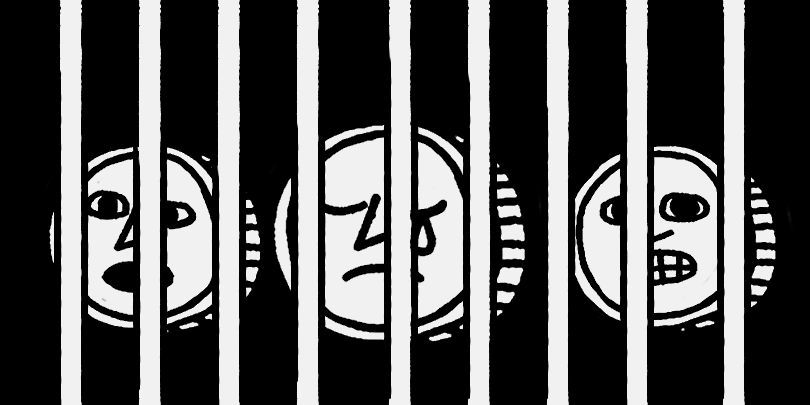Millions of defrauded depositors, stadiums of spectators and hundreds of thousands of stolen bitcoins. This is how you can describe three of the most high-profile Ponzi schemes in the blockchain industry. We tell you how it all started, how much investors lost and what income they were promised
Cryptocurrencies have many benefits. For example, low transfer fees, fast transactions, limited emission and others. But despite this, digital assets still have a controversial reputation that hinders their recognition in society. One of the reasons for this is financial pyramids.
This term is used to describe a Ponzi fraudulent organization. The organizer of the company invites investors, promising them big profits in the future. But there are two conditions: users must deposit funds and also attract new members. The latter are given a similar task. And so on – along the chain.
Such organizations do not create products, do not provide services. In view of this, all the profits that early investors receive are generated from late investments. As a rule, the organizers of the pyramid receive most of the funds, and the rest of the participants are left with nothing or, as in our case, with a depreciated cryptocurrency. We are talking about the largest financial crypto pyramids, who was behind them and how many billions users lost on it.

OneCoin, 2014 – 2017
The largest financial pyramid scheme is considered to be OneCoin. It was founded by the "crypto-royal" Ruzha Ignatova in 2014 and in less than 3 years has attracted more than 3 million people who have invested about 4 billion euros, according to the FBI. The BBC Russian service named an even larger amount, according to their calculations, the total damage could reach 15 billion euros.
The pyramid worked on the principle of network marketing. Members were rewarded for attracting new members on the pretext of untold riches in the future. As Ignatova assured, OneCoin was to become the world's most successful digital asset. The "promising" coin was supposed to be used for payments around the world and "kill bitcoin", but it didn't even have a blockchain.
In this regard, OneCoin was fundamentally different from other cryptocurrencies. Firstly, it could not be mined, the issue was carried out exclusively by One Coin Limited. Secondly, transactions with OneCoin could only be carried out through sites controlled by the pyramid's leadership. Thirdly, the management had the entire project database in its hands.
The first beginnings of the fight against the pyramid appeared in September 2015. Then the Financial Supervision Commission of Bulgaria published a special message dedicated to OneCoin. It said that this digital currency, like others, is not regulated by law, is not recognized or considered as a financial instrument, and investments in it pose a high risk. After that, OneCoin ceased operations in the country and stopped using local banks to process payments.
The UK took over in September 2016. The local Financial Conduct Authority (FSA) said OneCoin does not need to be licensed, but may pose a risk to consumers. Three months earlier, Ignatova performed at the famous Wembley Stadium in London. By this time and since the beginning of the year, the British have invested about 30 million euros in the pyramid.
In 2017, the Bank of Thailand and the Austrian Financial Markets Authority came out with tougher rhetoric towards Onecoin. At the same time, Italy's financial regulator banned all activities with the OneCoin cryptocurrency, and the German government ordered the company to stop doing business in the country, banned token trading and froze € 29 million in bank accounts that were used for money laundering.
Probably, the interest of financial regulators prompted Ignatova to take action. In October 2017, a conference was to be held in Lisbon with the pyramid investors and its promoters. However, the "crypto queen" did not come to her. Since then, nothing has been known about her. At the moment, the American authorities have brought several charges of electronic fraud, securities fraud and money laundering against Ignatova. She faces up to 25 years in prison.
However, the hand of justice reached the other organizers of the pyramid. In 2018, OneCoin lawyer Mark Scott was detained in the United States. Two months later, the FBI arrested Sebastian Greenwood, Ignatieva's partner. Her brother Konstantin Ignatov was caught in the United States in the spring of 2019. Then he appeared in court, at which he stated that he was deceived and did not understand that he was participating in a financial pyramid.

Bitconnect, 2016 – 2018
The second pyramid in terms of funds raised is Bitconnect. It was organized in 2016 by an unknown development team, the main one of which called himself Satao Nakamoto. Investors were offered to buy BCC tokens and temporarily block them on a special platform. A trading bot allegedly worked on it, which, over time, was supposed to return the funds received with a profit.
Bitconnect allegedly guaranteed users a monthly income of 40% from investments that were blocked for 299 days. At the same time, the larger the amount invested by the client, the earlier he could withdraw funds and in addition to this he received a bonus in the form of a daily percentage. So, for example, $ 1000, according to the business model of the organizers of the scheme, should have turned into $ 50 million in 3 years.
One of the first to report the similarity between Bitconnect and a pyramid scheme was Ethereum creator Vitalik Buterin. In November 2017, he wrote on his Twitter account that promises of 1% in daily profit are pure Ponzi schemes. A few weeks later, a similar opinion was expressed by the founder of Litecoin Charlie Lee, as well as the head of Galaxy Digital , billionaire Mike Novogratz.
Simultaneously with Buterin, the UK government issued a warning regarding the activities of Bitconnect. It gave the organization two months to disclose the details of its business model, threatening to force closure. However, this did not stop the pyramid from continuing to work and attracting new customers. For example, she entered into a temporary partnership with Blockchain Expo, thanks to which she got to the ICO EVENT conference in Amsterdam as a sponsor, and then held a meeting with investors in Thailand.
The end of the history of Bitconnect was set by the US government. In January 2018, financial regulators in Texas and North Carolina called Bitconnect's business model a classic pyramid scheme and asked the organizers to suspend the activities and sale of BCC tokens.
Following this, trading platforms began to delist the project's cryptocurrency. This and the actions of the regulators led to an instant drop in the BCC price. After reaching an all-time high above the $ 500 level, it collapsed more than 90%, below $ 30. The damage to investors amounted to about $ 3.5 billion.
Law enforcement agencies managed to catch only one of the Bitconnect members. In August 2018, Divayesh Darjee was arrested, one level below the founder of Bitconnect and was in charge of the Indian branch. The detainee was suspected in connection with criminal structures that laundered money on the territory of the country. However, in 2019, Darjee was released on bail.

PlusToken, 2018 – 2019
One of the last, large pyramids was PlusToken. For the first time it became known about it in the summer of 2018, information about the new scheme of earnings was disseminated in the Chinese messenger WeChat. The organizers promised investors an income of 10% to 30% per month, bonuses for attracting new members, a mechanism similar to Bitconnect was used. To participate, it was required to exchange bitcoin and other coins for the PLUS cryptocurrency, in which clients received rewards. At that time, it could be purchased on the Huobi and Bithumb exchanges.
According to the Bitcoinmagazine portal, PlusToken was able to attract more than 4 million investors from China, Japan, Germany, as well as Russia and Ukraine, and other countries. Thus, more than 200 thousand BTC, 789 thousand ETH and 26 million EOS were collected. The latter, by the way, the day before yesterday, June 22, began to move. All 26 million tokens were transferred from the PlusToken wallet to an unknown address, the transaction was recorded by the Twitter bot Whale Alert.
PlusToken targeted people with little understanding of digital assets. The organizers held training lectures to gain the trust of customers. They described how to buy cryptocurrency and, accordingly, convert it into Plus tokens.
Unlike Bitconnect and Onecoin, justice has caught up with the six organizers of this pyramid. On June 25, 2019, authorities on the island of Vanuatu, where PlusToken's headquarters were located, arrested the fraudsters at the request of Chinese law enforcement agencies.
However, it was not possible to return the investors' funds. Some of the coins have already been laundered. Another cryptocurrency remained with unknown supporters of PlusToken and is still periodically moving between addresses. In total, the damage to the pyramid clients amounted to at least $ 3 billion in bitcoin and other coins.
PlusToken organizers, in addition to fraud, are also accused of manipulating BTC quotes. This opinion was expressed by the co-founder of Primitive Venture Davi Wang. She argued this as follows: From February to March last year, the pyramid significantly increased fundraising efforts. At the same time, a rally in the cryptocurrency market began. The bitcoin rate began to rise from the $ 3200 mark and on June 26, the day after the fraudsters were arrested, set an annual high at $ 14,000. On June 27, the coin's price plummeted to $ 10,500 and has since entered a long-term decline.

The arrest of the organizers of the pyramid is not the end of the pyramid
Despite the fact that all the listed pyramids in one form or another ceased their activities, this did not prevent them from continuing to deceive people and steal their money. For example, after the collapse of Bitconnect, unknown people announced the launch of the Bitconnect 2.0 project. And various branches of OneCoin, which itself is a continuation of the BigCoin pyramid, can still be found on social networks.
Unfortunately, novice investors in their pursuit of quick money rely on scammers. And financial regulators do not react quickly enough to such schemes. Therefore, the best method of dealing with pyramid schemes is prudence and awareness. If a company promises multiple returns in return for your investment, try to figure out where it gets the money from. For example, read reviews on the Internet, study her story, do your own investigation. It is possible that the main source of funding for the organization is funds from other contributors.

